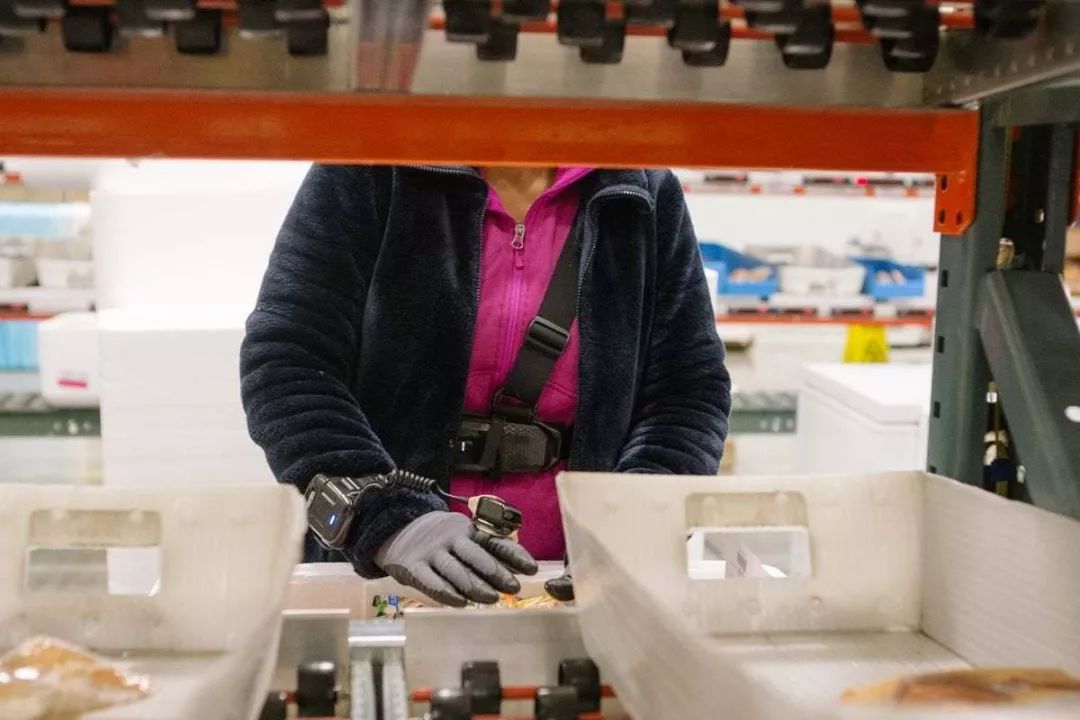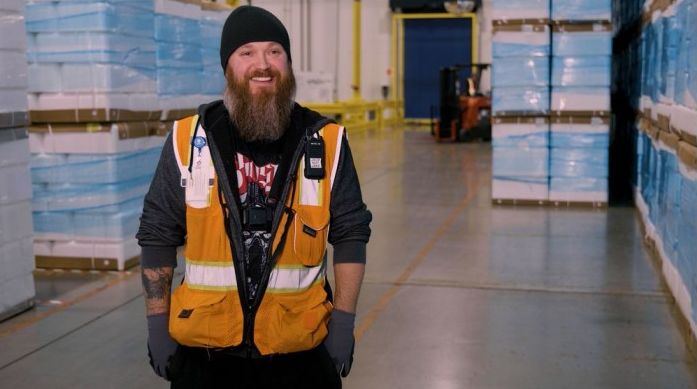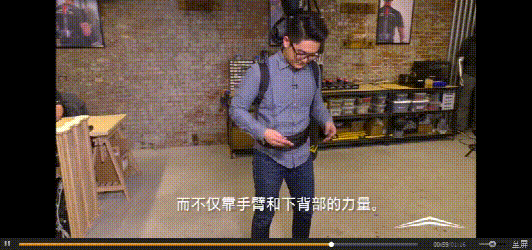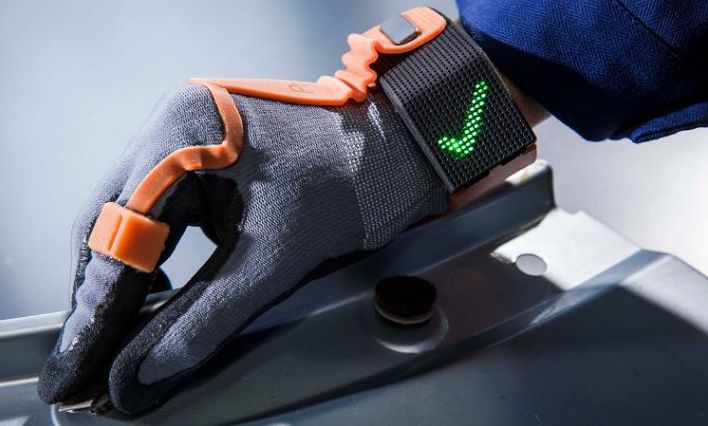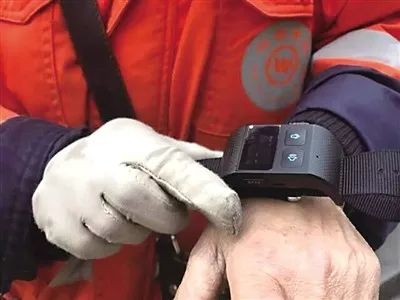Wearable anti-work injury equipment, supervised by the technology era?
Editor’s note: This article is from WeChat public account “Knocking on the blackboard” (ID: qiaoheiban8), author Gong Xiaoli.
Today, behind every commodity or service we consume, there is a tangible or intangible assembly line. Each person is based on his or her own interests, occupying a certain position in a certain link, focusing on improving individual efficiency until From novice to expert.
This social specialization division promotes the overall efficiency by improving individual efficiency, greatly improving the overall production efficiency of the society, and also driving the explosive growth of the overall wealth of society.
But the shortcomings are equally obvious—specialized division of labor limits the individual’s free development. When people are stuck in a place where social production machines are located, the stylized process makes their thinking rigid, the skills tend to be single, the body’s Some parts also accelerate aging due to excessive wear and tear.
Imagine that even the white-collar workers who sit in the office every day are generally plagued by diseases such as mouse hands, cervical spondylosis, and lumbar disc herniation, let alone those that emphasize physical labor. In the logistics industry, sorters on a production line may have to bend over 4,000 times a day. Airport baggage sorters may only bend 800 times a day, but most baggage exceeds 10 kg.
Recently, a startup in the United States, StrongArm, introduced wearable anti-work injury equipment. This device is just like a smartphone. It can track every muscle movement of the wearer. As long as they make an easy-to-injury action, the device will Send a reminder warning.
Wal-Mart and several large companies have begun trials of the device, but unions worry that employers will not be able to resist the use of this data after they have collected employee data.
Devices that reduce the risk of work injury
Jack Westley is a cold storage porter in Pennsylvania who works for the French logistics leader GEODIS. Since GEODIS began experimenting with StrongArm’s wearable anti-work injury equipment, Westley has buckled the device on his shoulder strap.
Whenever Westley bends too far, the anti-work injury equipment vibrates, reminding him of the increased risk of muscle injury. Westley quickly realizes that he bends frequently because he needs to reach out frequently. Go and take the tray for the box.
“As soon as the device starts to vibrate, I will go to the side of the tray instead of bending over and reaching for it,” Westley said.
In addition to promptly reminding Westley, the anti-work injury equipment will also synchronize the collected information to his employer GEODIS.
GEODIS says that anti-work injury equipment can complement existing warehouse safety regulations, such as helping workers pick the most suitable job to reduce the risk of injury.
Two years ago, StrongArm designed the prototype FUSE for anti-work injury equipment, which is also a wearable sensor.
FUSE collects 12.5 data per second, relies on the processor to analyze the data, and provides real-time feedback to workers, which determines the level of risk of personal injury and allows workers to complete the lifting step more safely.
StrongArm also introduced a smart belt called V22, which can be fixed at the waist like a backpack. This device allows workers to maintain a safe posture when lifting heavy objects. Developers say the device also uses an exoskeleton-like technique that makes it easier for workers to lift objects or move longer distances at once. In this way, workers are not easily injured because of a certain part of the body’s muscle load.
Today, StrongArm wearable anti-injury equipment has served about 30 major customers, including Heineken and Toyota. Customers generally believe that this technology enhances employees’ awareness of safety issues, such as the same double alert eyes. Provide employees with near-real-time guidance, and employees will be more conscious of protecting their actions after wearing the device.
Trade unions worry that data is being used by employers
StrongArm said that the product was originally designed to improve security, it cited the mostAccording to a recent study, the probability of injury has dropped by 20% to 50% for users wearing their products.
However, there are many workers who don’t like this product. Given the opacity of data analysis tools, it’s hard to figure out how much information an employer can see.
Adam Kashinsky strongly opposed the factory’s trial of StrongArm equipment. He worked for the International Union of Electronics and Telecommunications (IUE-CWA) and was the chairman of a local Massachusetts trade union organization.
” Employers don’t need to know the data.” Kashinsky suspects that the data collected by the anti-work injury equipment will eventually be used to force employees to speed up their work or to question employees’ compensation for work-related injuries.
Kashinski said that under his persuasion, the workers at General Electric’s Lynn Aerospace Plant in Massachusetts quickly stopped using the equipment, and StrongArm’s pilot program here was unsuccessful.
Toyota’s plant in Princeton, Indiana, also planned to introduce StrongArm’s anti-work injury equipment last month, but Toyota left the plan at the last minute before the trial, but Toyota said it will still maintain the technology. attention.
Kashensky questioned whether it is possible to separate the safety of tracking work from the performance of tracking work.
“When your body is involved in work, ergonomic data is productivity data,” Kashinsky said. “It’s clear that employers want to do more with less. They want workers to work faster and work longer hours. Increase production while also hoping to reduce workers’ claims.”
Amazon workers don’t dare to go to the toilet
Kashinski is not a worry, GEODIS has been using a system that monitors workplace productivity, and underperforming employees are subject to disciplinary action or even dismissal.
This is exactly the same as Amazon’s use of AI to monitor employees and “one-click expulsion” for inefficient employees.
Video clipped from YouTube
Earlier this year, the Amazon Logistics Center was exposed to monitoring employees with an artificial intelligence system that warned and recorded employees when they were not scanning packages for a long time.
What’s even more frightening is that if employees don’t meet productivity metrics, the system’s automated process will automatically dismiss these employees, even without the approval of superiors. It is understood that hundreds of employees have been fired by this system. A survey showed that 3/4 of Amazon’s warehouse employees were afraid to go to the toilet because they were afraid of wasting time.
For this question, StrongArm has to repeatedly emphasize that its products do not track personal productivity, nor are they used to punish individual workers or object to workers’ claims. Its founder, Sean Peterson, also announced that he is opposed to using StrongArm’s technology to punish employees, and if this happens, he will consider restricting customers to access data.
How long does this persistence last? Mike Hoños, chief operating officer of GEODIS Americas, is outspoken and one day the company can consolidate all of this data into a single system for increased security and operational efficiency.
Don’t take advantage of the good scorpion to enlarge the evil
It can be used to prevent work injuries as well as to improve efficiency. This integrated two-sided feature is the embarrassing aspect of wearable anti-work injury equipment.
No matter how many times StressArm emphasizes the design of the product in good faith, as long as the device will synchronize the data to the employer, it will never be able to dispel the most malicious speculation of the employer’s motivation.
On the moral level, there is a huge risk in wearable anti-work injury equipment, and it may also amplify the evil of human nature.
With the development of IoT technology in recent years, sensors have been widely used in industrial and agricultural fields. People can monitor the operation of the machine through sensors, and can also monitor the health of livestock through sensors. Getting workers to wear wearables (also a sensor) is not a problem in itself, but once this monitoring begins to serve an increase in productivity, it means that workers are placed in the same position as machines and livestock, which constitutes The trampling of human dignity is also a very immoral act.
From the historical process of human society, as long as there is a role of supervisory, it usually means oppression, slavery and violation of freedom.
The modern society has no supervisors, but people only enjoy active work, and when the work content becomes less interesting, evenIt’s a bit of a forced meaning, and it’s a common phenomenon to “fishing the fish” during working hours.
Touching the fish can also be regarded as a kind of disguise, and camouflage is the nature of human beings and a way to achieve self-protection. The terrible thing is that when the employer has the tools that can easily expose the disguise, the laborers who were originally in a weak position in the employment relationship will only have a stronger sense of insecurity and resistance.
At the end of the day, the wearable anti-work injury equipment itself has no problem, but synchronizing the data, but making the workers a transparent person in the eyes of the employer, this horror is no less than the “big brother” written by George Orwell. gaze.
Unfortunately, the European Court of Human Rights has preceded the jurisprudence that the company has the right to monitor employee data if it matters. If so, you can only hope that your employer is a boss who cherishes the staff, not a greedy and demanding guy. After all, a technology is good or bad, always looking at who it is used for. purpose.
